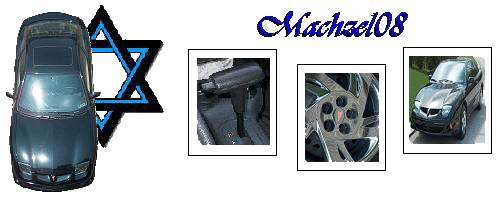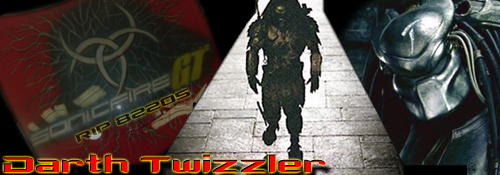wesmanw02 wrote:Wow looks like SEMA"s turning into a ricer fest 
Unfortunatey any nice cars that are there are all overshadowed by the gaudy rice like that shown in the above pictures.
no see rice is when it would be on a honda civic or any other FWD car that is used for street use not actual racing.. learn what rice actually means before you start throwing it around because people could call your car rice also.
below is a write up from sport compact car mag in 2003. this might understand a tiny bit better.
here is the full article with some pictures to with some of you who might be a little off of the learning curve.
Technobabble: August 2003
The Origins of Rice
By Dave Coleman
Ask any riceboy why his front wheels are steel, why the chin of his body kit sticks out so far, or why there's a cross-drilled plastic imitation brake rotor hiding his rear drums, and you're guaranteed a blank stare. There is no "why" in the world of fashion, you just do what looks good. But why does that goofy @!#$ look good to him? Racecars, that's why.
Even in the bizarre world of the show car, form still follows function. It just happens to be following from a long way away. On a dusty road. With bad directions. The steel wheels came from early front-drive drag cars. Back then, the fastest guys, the ones breaking the 12-second barrier, had under-funded cars they drove to the track. Their heavy 17-inch wheels (that was big back then) and low-profile tires didn't hook up out of the hole, and doing burnouts on street tires was bad for the wallet.
Sticky tires, then, were mounted on smaller steel wheels for a gearing, grip, and financial advantage. Before long, those who weren't racing but wanted to look like they were, started popping off their front hubcaps and saving money for two 17-inch wheels instead of four. What started for a reason on the mean streets of El Monte, Calif., is now repeated blindly in Rumsey, Ky.
What looked boxy and strange in its first appearance on Subaru's trunk morphed into this far more attractive Focus wing only four months later. Just think what Veilside will be able to do in six more months.
The best, most extreme show cars hardly ever turn a wheel under their own power, so why do so many of them have massive front-mount intercoolers? Because racecars with big turbos have massive front-mount intercoolers. Nineteen-inch wheels on Hondas? What was mandated by the British Touring Car Championship in the '90s is now fashion for the new millenium. So where will the next riceboy fashion come from? I say rally cars.
Don't expect rice burners with knobbies, but I'd put money on the latest trend in rally car aerodynamics being reproduced in 50-pound Tiwanese fiberglass before the end of the year. In 10 years it will be in Kentucky.
So a decade from now, when you see a pimply faced Kentucky boy gluing a segmented rear wing to the rear hatch of his tired old RSX, you can tell him that idea first appeared at the 2003 Rally Monte Carlo. That was the first race for Subaru's updated aero package, which in addition to the new-generation Impreza nose, includes a rear wing with four vertical slats sticking through it. The design was such a good idea that three races later, in New Zealand, every one of the top cars had a similar wing.
The slats, you can explain, are there to improve high-speed stability by maintaining downforce when driving sideways, and by using the wind to help push the tail back behind the nose.
As the wing pushes through the air, the air following the top surface of the wing gets flung upward. Newton says the air's job, when being pushed up, is to push back down on the wing. On the bottom surface, the opposite happens; with the wing surface suddenly pulling up, air is sucked up to take its place, and when that happens, the air pulls back down on the wing.
Slide into a corner at a 30-degree angle, though, and two things happen. First, the wing is effectively narrower to the air approaching it. Second, the cross section of the wing, carefully designed in the wind tunnel for optimal downforce, gets elongated, taking some of the violence out of the air's journey upward.
Violence is everything when you're dealing with air, so the no-longer optimal cross section of the wing means less downforce.
The slats force the air to straighten out and go across the wing as the team aerodynamicist intended. All the air slamming into the side of those four slats, plus the two end plates, also work to straighten the car out, much like the vertical stabilizer on an airplane.
If he's still standing there, don't expect Kentucky boy to believe you. The wing, he'll slowly and carefully explain, since obviously you don't know much about cars, is there for the ladies.
He'll probably be right.
http://www.sportcompactcarweb.com/editors/technobabble/0308scc_techno/

"Theres a time in every mans life where he hits a cross roads and...wait...are you wearing panties?"
























 If it's not network news, it's probably the truth getting out.
If it's not network news, it's probably the truth getting out.
